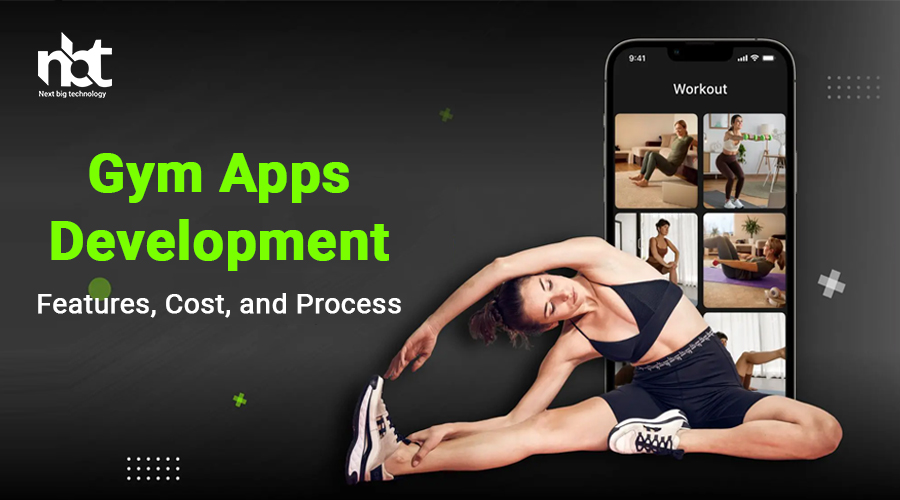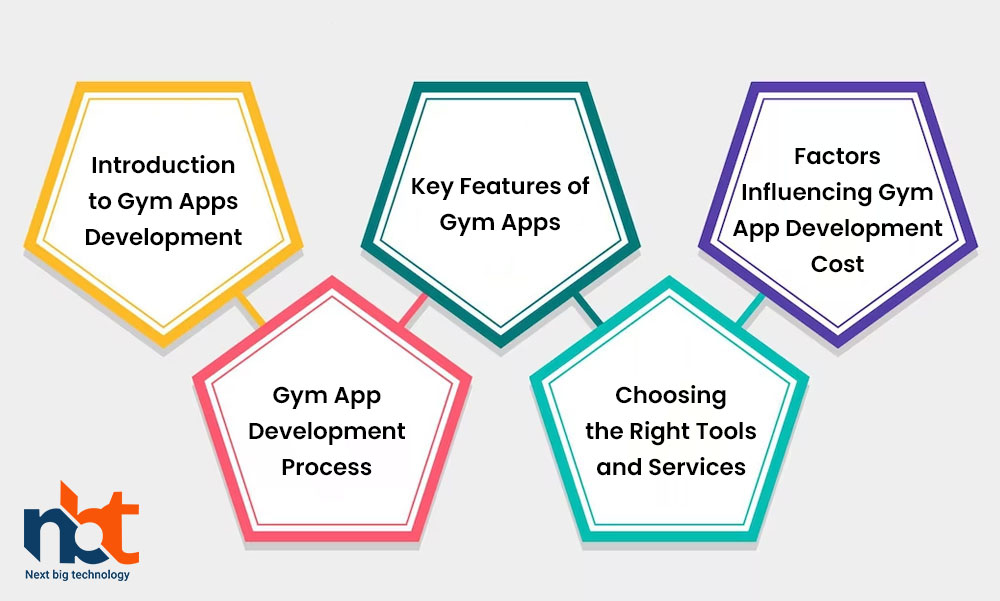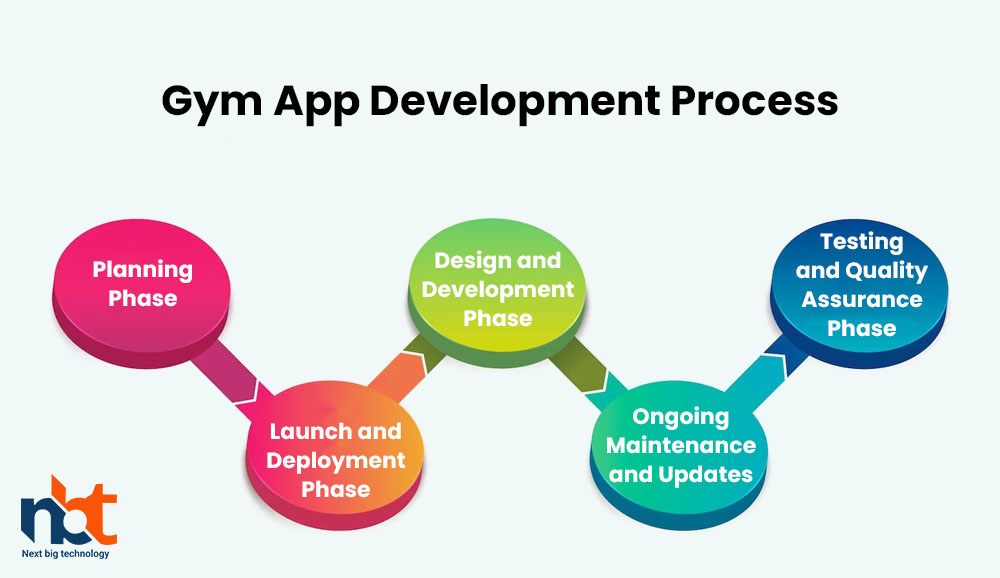In the modern fitness landscape, gym apps have emerged as powerful tools that enhance the workout experience, streamline fitness routines, and offer valuable resources to both gym-goers and fitness professionals. These apps provide a range of functionalities, from workout tracking to personalized training plans, making them an integral part of the fitness journey. This comprehensive guide delves into the key features, cost considerations, and step-by-step process involved in developing effective gym apps that cater to the needs of fitness enthusiasts and gym owners alike.
Table of Contents
Introduction to Gym Apps Development
- Understanding Gym Apps: Defining the role of mobile applications in revolutionizing the fitness industry.
- Importance of Digital Fitness Solutions: Highlighting the benefits of gym apps for users’ fitness journeys and gym management.
Key Features of Gym Apps
Workout Tracking and Progress:
- Exercise Logging: Allowing users to record their workouts and track repetitions and weights.
- Progress Charts: Providing visual representations of users’ fitness progress over time.
Personalized Training Plans:
- Custom Workouts: Offering tailored workout plans based on users’ goals and fitness levels.
- Video Demonstrations: Providing instructional videos for proper exercise form.
Nutrition and Meal Planning:
- Nutritional Guidance: Offering dietary tips and advice for achieving fitness goals.
- Meal Planning: Providing tools to create and track personalized meal plans.
Community Engagement:
- Social Feed: Allowing users to share workout achievements, tips, and inspiration.
- Challenges and Competitions: Organizing fitness challenges to promote engagement.
Booking and Scheduling:
- Class Reservations: Enabling users to book gym classes and training sessions.
- Trainer Appointments: Allowing users to schedule sessions with fitness professionals.
Wearable Device Integration:
- Fitness Tracker Compatibility: Syncing with wearable devices to track steps, heart rate, and more.
- Data Integration: Collecting data from wearables to enhance workout analysis.
User Profiles and Privacy:
- Personalized Profiles: Allowing users to create profiles to access customized fitness plans.
- Data Security: Implementing security measures to protect user fitness data.
Factors Influencing Gym App Development Cost
- Features and Complexity: The number and complexity of features integrated into the app.
- Design and User Experience: Creating an intuitive and visually appealing user interface.
- Integration with Wearable Devices: Developing compatibility with fitness trackers and smartwatches.
- Content Creation and Personalization: Generating workout plans, instructional videos, and challenges.
- Social Engagement Features: Incorporating social feeds, challenges, and community features.
- Data Security and Privacy: Ensuring compliance with data protection regulations.
- Ongoing Maintenance: Regular updates, security checks, and customer support.
Gym App Development Process
1. Planning Phase
- Identify App Objectives: Define the primary purpose of the app (workout tracking, personalized training).
- Feature List: Compile a comprehensive list of features necessary for the app.
- User Experience (UX) Design: Outline the app’s user flow and initial design concept.
- Platform Selection: Decide on the target platforms (iOS, Android, or both).
2. Design and Development Phase
- Wireframing and Prototyping: Create wireframes to visualize the app’s layout and navigation.
- User Interface (UI) Design: Craft visually appealing screens aligned with the app’s fitness focus.
- Backend Development: Build the backend infrastructure to handle user data and app functionality.
- Wearable Device Integration: Develop compatibility with wearable fitness devices.
3. Testing and Quality Assurance Phase
- Functional Testing: Verify that all app features work as intended.
- Usability Testing: Involve users to test the app’s usability and gather feedback.
- Security Testing: Ensure data security and privacy safeguards are in place.
- Performance Testing: Test app responsiveness and loading times.
4. Launch and Deployment Phase
- App Store Submission: Prepare and submit the app to relevant app stores (Apple App Store, Google Play Store).
- Promotion and Marketing: Develop a strategy to promote the app and attract fitness enthusiasts.
- User Onboarding: Provide user guides or tutorials to help users navigate the app.
- Analytics Setup: Implement analytics tools to track user engagement, workout frequency, and user behavior.
5. Ongoing Maintenance and Updates
- Regular Updates: Continuously enhance the app by adding new features and improvements.
- Bug Fixes: Address technical issues promptly to ensure smooth app functionality.
- Security Updates: Regularly update security measures to protect user fitness data.
- Customer Support: Provide assistance to users for inquiries and issues.
6. Choosing the Right Tools and Services
- App Development Platforms: Explore platforms like React Native, Flutter, or native app development.
- Wearable Device Compatibility: Utilize SDKs and APIs to connect with fitness monitoring devices.
- Analytics Tools: Implement tools like Google Analytics or Mixpanel for user behavior tracking.
- Content Creation Tools: Utilize graphic design software for creating visuals and videos.
- Data Security: Ensure compliance with regulations for fitness and user data protection.
Conclusion
Gym apps play a pivotal role in enhancing users’ fitness journeys, promoting engagement, and optimizing gym management. The features you incorporate, the design complexity, and the ongoing engagement efforts all contribute to the overall cost. By following a structured development process, leveraging appropriate tools, and prioritizing user experience, security, and engagement, you can create a gym app that empowers users to achieve their fitness goals, fosters a sense of community, and contributes to the evolution of the modern fitness landscape.












